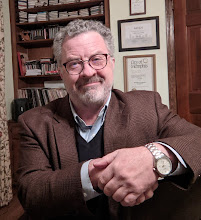On the western shore of Lake Chautauqua - about 10 miles east of Lake Erie and 70 miles south of Buffalo - the Institute covers an expansive 700 acres of rolling hills, shady groves, and lakefront views. Founded in 1874 by two men who sought to offer a two week course to better prepare Methodist Sunday schools teachers in arts, culture, science, and national affairs, the Institute grew to welcome people of all faiths. There are denominational houses spread around the grounds - Methodist, Presbyterian, Episcopal, Luthern, Catholic, Baptist, and more. There are evening services at each house, a daily plenary chapel service ( last week featuring Rev. Tony Campolo) , and occasional afternoon presentations ranging from a priest's slide show of a pilgrimage to Rome to a Muslim prayer service welcoming outsiders.
The four pillars - knowledge, art, religion, and music - as inscribed on the four-sided fountain in central Bestor Square - manifest themselves in program of all sorts, especially lectures. Each morning at 10:45 a prominent figure gives a talk in the elegant wooden amphitheater constructed in 1893. The 5,000 seat facility (and by seat, read wooden pew and bring a seat cushion) is covered and may fetch a breeze in good weather. Among this week's amphitheater speakers were David Brooks of The New York Times, George Packer of The New Yorker, and Alan Schwartz of Guggenheim Partners. Next week will be Supreme Court Justice Ruth Bader Ginsberg. Past speakers have included William Jennings Bryan, Theodore Roosevelt, and Franklin Roosevelt.
Preceding and following the main morning lecture are numerous small lectures, guided walks, classes in art and music, and recreational activities. At 2:00 another keynote lecture is presented in the Hall of Philosophy, a somewhat smaller but still impressive pavilion.
Rvening concerts in the amphitheater ranged from the Chautauqua Symphony (playing Wagner, Britten, and Shostakovich) to Travis Tritt. Arts and entertainment abound due in part to multi-week summer camps for orchestra , opera, visual arts, and theater. I saw a compact but magnificent production of Mozart's Don Giovanni by students from Julliard, and attended a brilliant artist’s talk by an instructor for the arts camp.
Lodging on the grounds looks very much like it would have 100 years ago. Vehicular traffic is discouraged except for loading and unloading. Walking, bicycling, and the occasional shuttle golf cart are preferred. The grand Anthenaeum Hotel dates from the mid-1880s. Many cottages, houses, and boarding houses date from 1880 to 1910, with a few newer constructs outside the core area. The challenges of a third floor walk up with one and a half bathrooms per floor (about seven rooms per floor) and no air conditioning can be a jolt to modern sensibilities, but also add to the focus and deliberation of the experience. Lack of TV or reliable cell phone service can be a blessing. The porch of the boarding house is a place for strangers to become friends, discussing the day's lectures and activities.
There are a few restaurants on the grounds - some elegant, some modest - but no liquor by the drink. You’re allow to purchase wine with dinner but dinner is not served past 7:30 pm. Many people who stay for a week or more bring food to make sandwiches or cook in the common kitchenette of the boarding house.
Most of the accommodations on the ground are only available in weekly increments; only a few offer nightly rates. Most people stay a week but some stay two or more weeks. Some stay the entire nine week season. A day pass is required to be on the grounds (and thus enjoy free access to all lectures and many activities ). If you drive, you must park in the main lot across the street from the grounds. Attendees from within two or three hours drive - or further - bring cars in order to have the option of making a quick trip into town (Mayfield is 5 miles away, Jamestown is about 15 miles away) to the grocery or for other supplies which might not be readily available on the grounds.
Of the few thousand people who will attend over the summer, the profile is solidly middle class, middle age to elderly, generally Christian, and always interested in life long learning. Still there are plenty of children on bicycles, swimming and playing frisbee because entire families come. many families have come for decades and grown children now accompany their parents with their own children in tow.
The result is a community of boarding house rooms with no keys and no locks. No litter, No unruliness. clean, safe, polite, and welcoming. Favorite haunts are the bookstore and the ice cream parlor.
And there is a sense of spiritual renewal. A community of believers -- even with slightly different beliefs -- is an atmosphere of quiet, almost automatic renewal and well worth two airplanes, a rental car, and a long trudge with luggage to reach.
NOTE: this past week saw record high temperatures for a couple of days before cooling off to normal pleasant conditions. It can just as easily be chilly. it is advisable to closely check (and re-check) the weather forecast and pack accordingly.


No comments:
Post a Comment